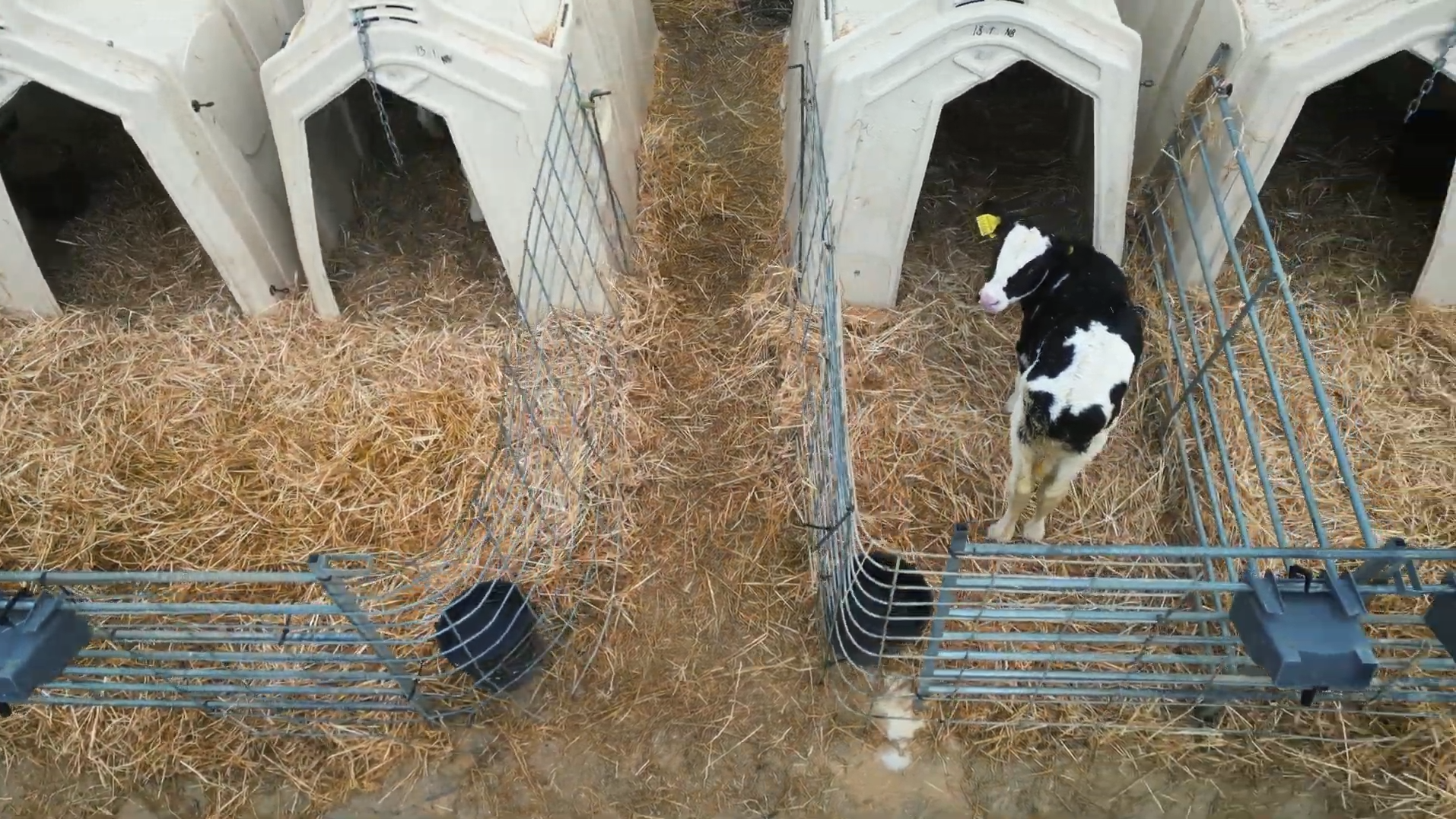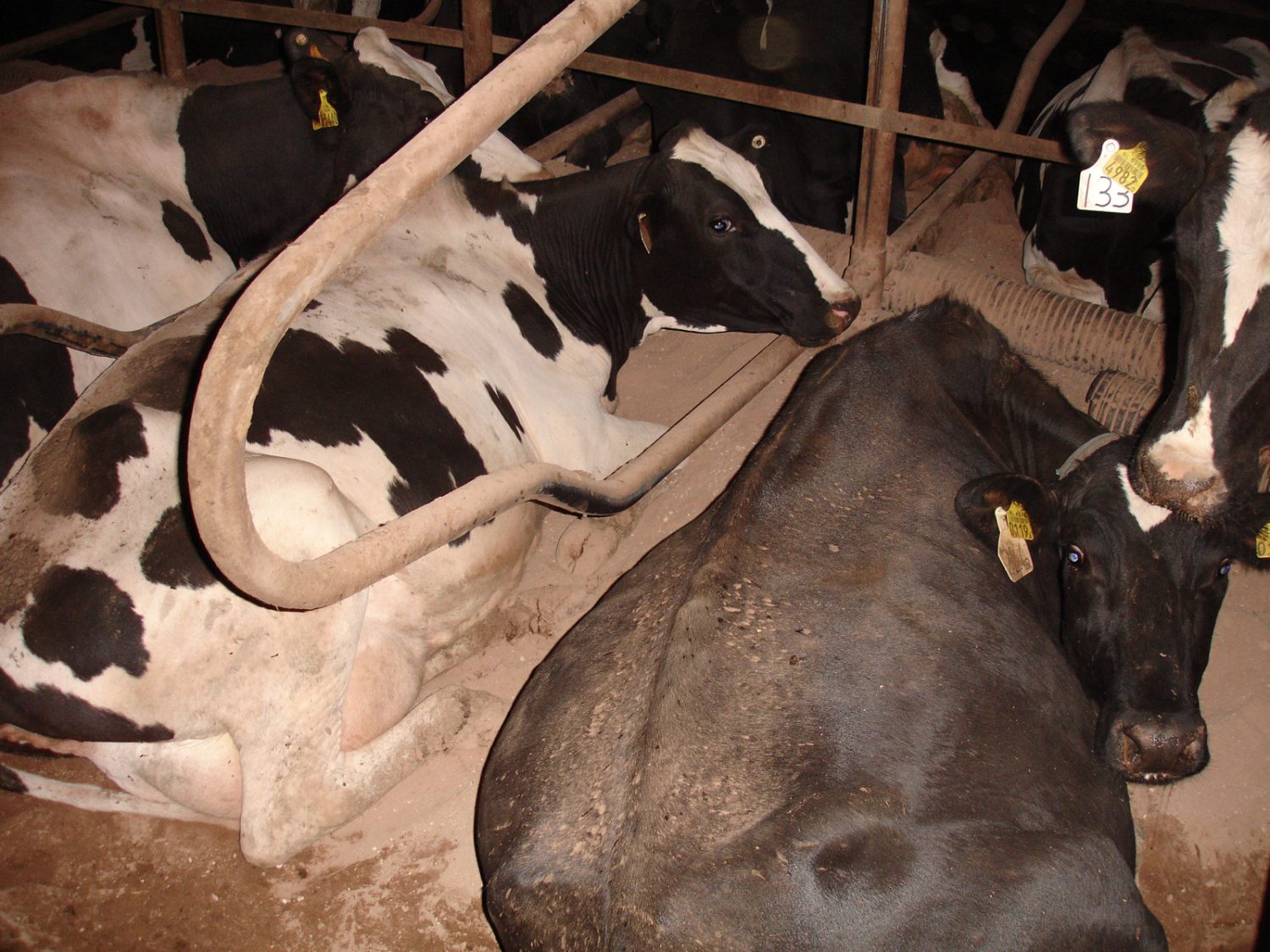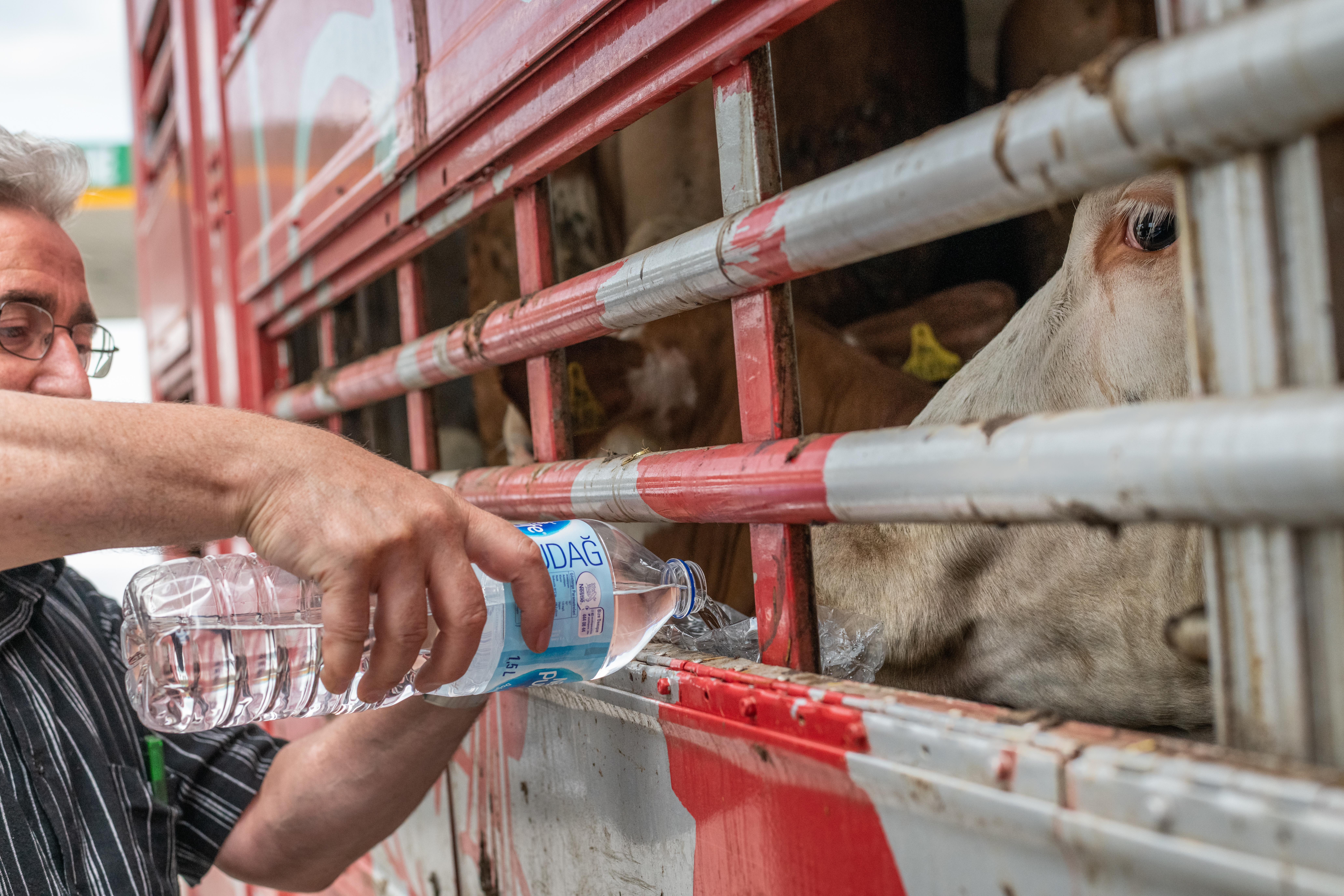Dairy cows
Of the 10 million cows farmed in the UK, 1.8 million are adult dairy cows who endure a near-constant cycle of pregnancy and birth in order to produce milk for human consumption. To produce milk, a cow must first be made pregnant and give birth. Her newborn calf is then removed, typically just hours after birth, so that her milk can be taken for humans instead. This process is truly disturbing: separating mothers and babies causes acute psychological distress, with mothers even chasing farm vehicles in pursuit of their stolen babies.
The separation of cows and calves, filmed by Farm Transparency Project
Dairy’s dirtiest secret: The fate of calves
Female calves will replace their mothers in the milking herd, destined for the same cycle of exploitation, but male calves are considered ‘useless’ because they cannot produce milk. Some will be sent to veal farms but most are slaughtered: between 2020-2022, over 107,000 male calves were killed in slaughterhouses, each one less than a month old, barely standing on wobbly legs and still crying for mum.
The ‘wastage’ of calves from the dairy industry is a scandal, but so too is how they are separated and isolated from their mothers, and from each other. These emotionally intelligent animals enjoy being groomed and socialising with their families – just like all animals. Yet it is standard practice in the UK to house calves in tiny, plastic ‘hutches’ with nothing but some straw for thermal comfort.

Calf hutches, filmed here in January 2025, are standard practice in the UK.
Dr. Helen Lambert, an internationally renowned animal welfare scientist and expert on animal sentience, had this to say:
“Cows are emotional, complex, intelligent, and social beings with markedly different personalities. Research shows us that keeping calves in these small hutches with little room to move, and few opportunities to interact with one another can have long-lasting and permanent effects on their well-being.”
The grass is not always green
Farmed animals are increasingly being houses indoors, all year round, in a bid to cut costs. Like battery cages for cows, ‘zero grazing units’ confine cows to barren, concrete cubicles that deny all their natural instincts to play, graze, and socialise. These individuals will never feel the grass beneath their hooves, or the sun on their backs.

Zero-grazing units are on the rise
Milk machines
One natural lactation period would produce less than 1,000 litres, but this is no good to an industry driven by profit. Instead, modern dairy cows are intensively bred to produce more than 10,000 litres, which takes a huge toll on their health and ability to fight infections or recover from injuries.
Cows also have poor reproductive success because their diets fail to provide the nutrition they need to produce such high quantities of milk, so most pregnancies (over 90%) are induced by artificial insemination [1]. The process is intrusive and traumatic for cows. This is often followed by potential calving difficulties where semen from large bulls is used to produce large calves, which the mother’s bodies cannot cope with. In some cases, permanent nerve damage leaves the cows’ unable to stand and doing the ‘splits’. The industry response? To shackle their hind legs together so that cows can continue walking to the milking parlour.
Sick and suffering
Clearly, the health of dairy cows is pushed well beyond its limits. She’ll be made to give birth while still lactating from a previous pregnancy, giving her body no time to recover. This is why many dairy herds have a skeletal appearance with protruding hips and spines, because their bodies are relying on energy reserves just to keep them alive. It’s also why most dairy herds have high rates of ‘milk fever’ (a condition caused by the sudden depletion of calcium); mastitis, which affects 60 in every 100 cows and causes pus to seep into the milk; and lameness.
Exhausted and infertile by just 5 years old, dairy cows are slaughtered and enter the beef supply chain, destined for ‘cheap’ meat products like pies and dog food. Just like animals reared for meat, her life will end brutally and prematurely.

Transported from farm to slaughter, cows spend their last moments terrified and stress.
Whether factory farmed, ‘organic’ or sold under the guise of ‘higher welfare’, the dairy industry treats animals as mere units of production, stripping them of their rights as individuals, as mothers, as family members.
Be the difference. Go vegan today.You can also help dairy cows by getting involved in our latest campaign, Terror on Our Tables. Launching in February 2025, the campaign is set to reach millions of people across the UK. Stay tuned for campaign news, coming soon!
[1] Phillips, C. (2023). Farming cattle. In A, Knight, C. Phillips, & P. Sparks (Eds.), Routledge handbook of animal welfare (pp.76-88) Routledge.